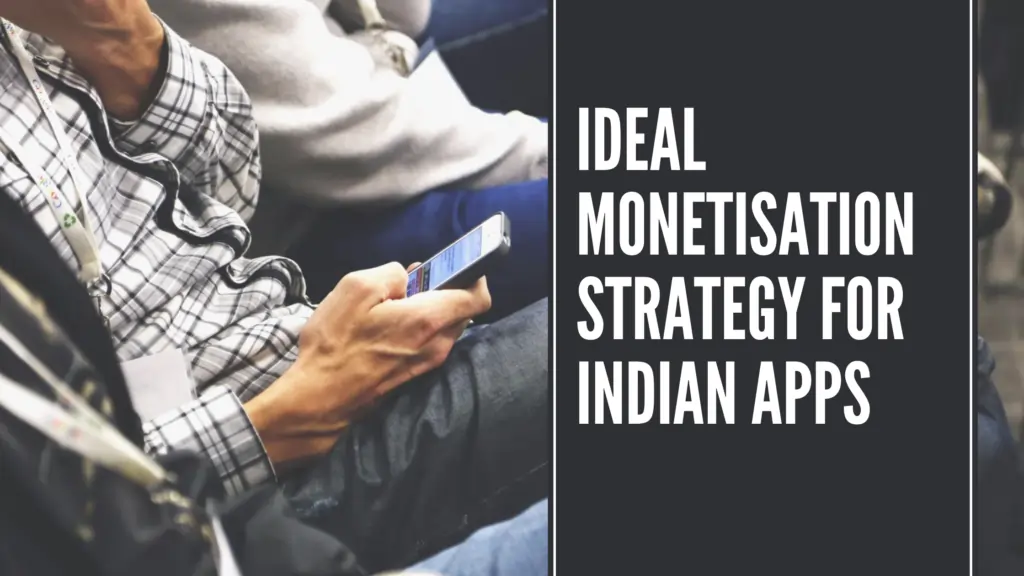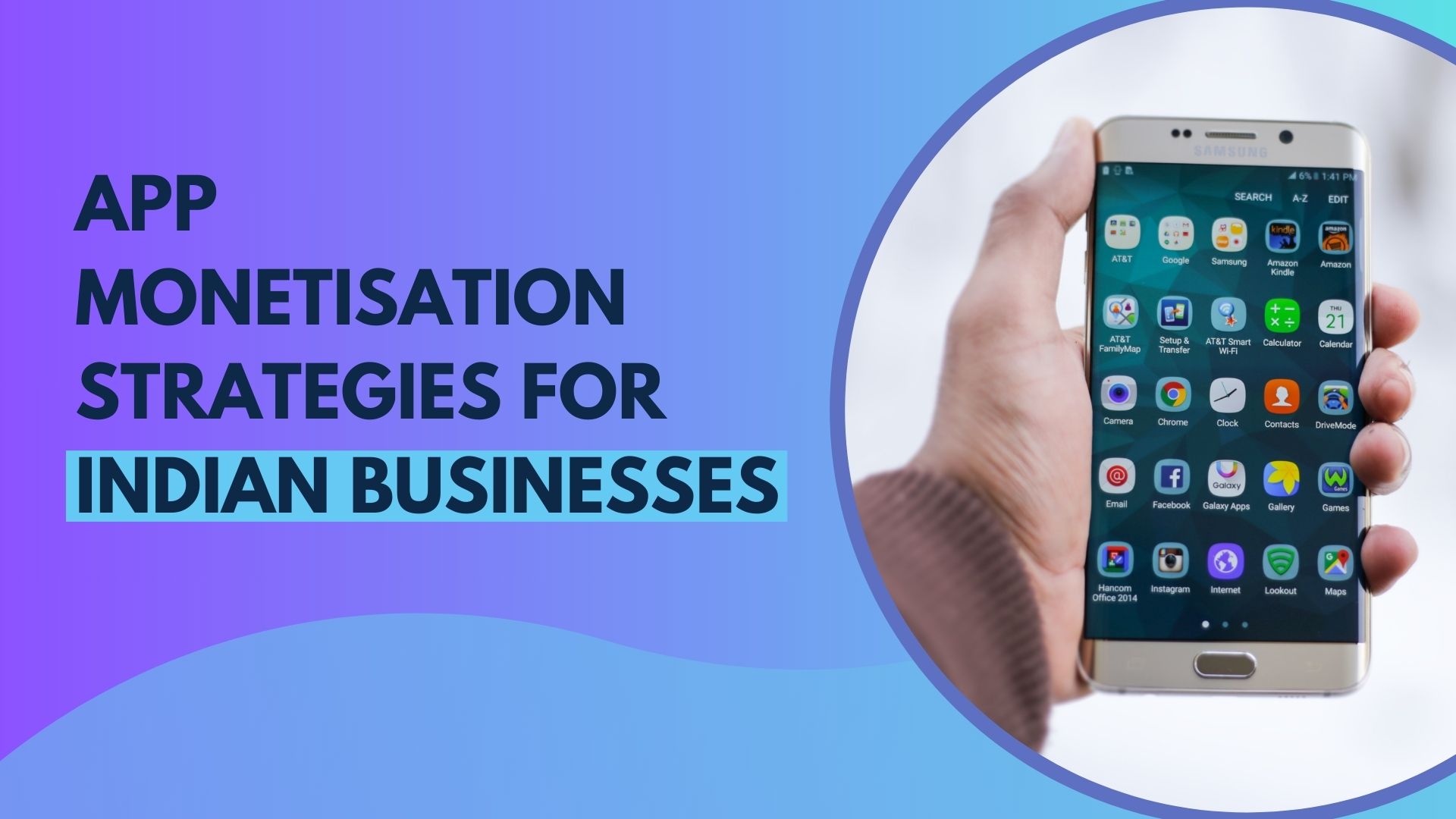According to the latest report by Data.ai (formerly App Annie), India has impressive numbers in terms of mobile users.
- India is home to the second-biggest smartphone population in the world, after China.
- India is number 1 in terms of time spent on apps.
- India is a distant number 2 in terms of downloads – 26.4 billion compared to 113.4 billion for China
But what about the revenue from these mobile users?
That’s where the picture changes drastically as India doesn’t even feature in the top 20 markets in terms of in-app purchases.
So if you are growing a app-first business (non-ecommerce/D2C) in India, here are 3 insights for you:
Insight #1
Indians don’t try out as many new apps as we should, given our population size. Chinese, for example, download 4X as many apps. So don’t pin your hopes too much on easy app discovery. Don’t get misled by our population size.
Insight #2
Indians just don’t like paying for anything in the apps we use. We want everything for free! So be very pessimistic about your chances of generating any substantial revenue from subscriptions or other in-app purchases, unless you have huge, really huge, numbers on your side.
Insight #3
If your audience is substantial, make your app completely free to use. And make it addictive, habit forming. And don’t bother about subscriptions. Show ads or do sponsored content, basically anything other than asking your users to pay up to keep using the app.
My Personal Experience
In 2021 and 2022, I was part of the core team growing an app-first company – a social, learning and entertainment app for senior citizens. The app had glowing reviews from thousands of loyal users and Google Play Store awarded it one of the best “apps for good” for 2022. We grew the app from scratch to half a million downloads and tens of thousands of daily active users. For our most active users, the app was addictive and a “new way of life” for them.
But when we experimented with subscription plans to monetize it, the response was underwhelming. It didn’t move the needle. When earning adult Indians don’t want to pay for using apps, we can’t really blame senior citizens for being miserly with their retirement funds.
So we quickly decided to make the app free and build features to make it more sticky. And focused only on the most performing acquisition channels. We prioritised community building (i.e. numbers) over monetization. We were confident that once we had enough numbers, monetization would happen via multiple non-subscription channels.
But the investors were not so confident and they pulled the plug on what could have been a bellwether app for senior citizens.
App Monetisation Strategies from An Indian Context

Let’s take a look at some of the app monetisation strategies commonly adopted by various businesses and what do I think about them from an Indian perspective.
1. In-App Purchases
Strategy: Users can download and use the app for free but will have to pay for additional features, content, or goods within the app.
Example: Many popular games like Candy Crush use this model, where users can play for free but may buy special abilities, lives, or boosts that enhance the game experience.
My Take: If you look at the insight I shared above, Indians are misers when it comes to paying for things in Apps. Unless you have a highly addictive and popular game like Candy Crush, you will hardly be able to sustain your business or make it profitable with in-app purchases in India.
2. Subscription Models
Strategy: Users pay a recurring fee (monthly or yearly) to access content or services. This model is particularly effective for apps offering continuously valuable content or services.
Example: Streaming services like Spotify and Netflix rely on this model, providing access to vast libraries of music and video content. Productivity apps like Evernote, Grammarly or Slack also use this model, offering tiered subscriptions for different needs.
My Take: For most successful apps with a subscription model, the value proposition is very high and the value is not restricted to just the mobile app. For example, Nteflix or other OTT apps allow video streaming on multiple devices, not just mobile. And apps like Grammarly or Slack are also used both on mobile and desktops.
But in spite of so much value on offer, many of these apps still struggle to generate revenue in India, unless it’s related to work and is paid for by companies for their employees (like Slack). Even Netflix, the global video streaming behemoth is struggling to generate subscription revenue in India. One of India’s biggest music streaming app Gaana is still a loss making venture.
So if you are going to charge a subscription for your app, either you make sure you offer immense value, or have something unique no one else has, or you have huge capital backing and can scale massively by burning capital and then think of leveraging economies of scale to generate profit.
Very difficult to achieve.
3. Freemium Upsell
Strategy: Offer a free version with basic features and a premium version with advanced features. This method helps in building a user base while also attracting paying customers.
Example: LinkedIn operates on this model, where basic professional networking services are free, but more advanced features like InMail, advanced search, etc., are locked behind a premium paywall. Other examples include audio book apps like Audible or Indian OTT apps like Hotstar, Zee5 or SonyLiv. All of these have free content. But if you want popular, latest, exclusive content you have to pay for a subscription.
My Take: Freemium upsell model is quite suitable for the Indian market. Free content increases user adoption leading to rapid growth in user base and with a large enough user base, you can always generate a decent enough subscriber base to generate consistent revenue. But freemium, by itself, is still not able to generate profits in most cases.
4. Ad-supported Model
Strategy: Provide the app for free, but show ads to the user, which generates revenue. This can be refined by offering an ad-free version through a one-time payment or subscription.
Example: Most news apps like TOI, HT, Indian Express and most games use this model, presenting ads intermittently while offering an option to remove ads via purchase.
My Take: This is the most sustainable monetisation model for Indian audience. We don’t mind seeing ads, as long we get the app for free. This model is especially useful for apps that are commoditised (for example board game apps for games like Ludo or Chess, or car/bike racing games). For these apps, because most don’t have any unique value proposition, and user retention is poor, they rely heavily on new downloads and showing banner ads to users through ad networks.
But there is a catch. You will not be able to generate enough revenue from ad networks unless you get tons of organic downloads from app store or play store.
5. Sponsorship and Partnerships
Strategy: Partner with other brands to create sponsored content or integrations that enhance the user experience while providing revenue.
Example: The meditation app Calm partners with health and wellness brands to create sponsored content that aligns with the app’s theme and user interests.
My Take: This is another form of advertising, but different from banner ads because it ensures that the partners you are promoting in the app are relevant to your audience. So if done right it enhances user experience and provides them tremendous value. For the Indian market this is another great way for you to monetize your app, especially if you are in a niche where you can build an online community. For example book lovers, writers, spiritual advice seekers, health and fitness enthusiasts, etc.
6. In-App Advertising
Strategy: Different from simple ad models, this involves integrating advanced ad formats like rewarded video ads, interstitials, or native ads in a way that complements the app usage.
Example: Mobile games like “Clash of Clans” offer users in-game rewards for watching video ads, which can boost engagement and ad revenue.
My Take: This is another form of ad supported monetisation with the difference of providing more engaging experience with the ads, hence the potential to charge premium fees from advertisers. This is a great monetization model for gaming apps, social apps, utility apps which have highly engaging and sticky users.
7. Data Monetization
Strategy: If legally and ethically permissible, apps can monetize the user data by providing valuable insights to third parties or through market research.
Example: Fitness apps may collect anonymized data on workout trends and sell this information to sporting goods manufacturers for market analysis. Fintech apps are another good example.
My Take: Although an effective app monetisation strategy, if law allows for it, it is generally never the primary monetisation strategy. It is good as an add-on monetisation channel.
8. E-commerce Integration
Strategy: Apps directly sell products or integrate with e-commerce to allow user purchases. This is popular with retail brands.
Example: Apps like Flipkart, Myntra and Amazon extend their e-commerce platforms into mobile apps where users can browse and purchase products directly.
My Take: If you are a D2C brand or a retailer or an online marketplace, selling products via your app isn’t really a natural extension of your business and not really a “monetisation strategy”. It’s your bread and butter.
But for many app first businesses, selling products via the app can be a great monetisation strategy if retailing is not their core business. For example a fitness or a yoga app can open an online store in the app to sell their private label products related to health and fitness or products from other brands that are meaningful to their audience.
9. Physical Purchases and Affiliate Sales
Strategy: Apps may also earn revenue by selling physical goods or earning commissions through affiliate marketing.
Example: Fashion apps like LIKEtoKNOW.it allow users to shop the looks featured in photos by linking directly to affiliate product sites.
My Take: This is an extension of e-commerce integration where you don’t launch your own online store but drive clicks to your affiliate partners stores. Again this is a great monetisation strategy for hobby/lifestyle/health/fitness apps which have built a big and engaging online community.
Ideal Monetisation Strategy for Indian Apps

There is nothing ideal in the business world. What works for some other business may not necessarily work for you, for various reasons.
But considering the app growth trends in India and the audience insights we discussed above I can conclude the following:
Conclusion #1: Do not have subscription as your primary monetisation strategy, unless your offering is niche or unique and you can create an organic user acquisition channel.
Conclusion #2: A mix of freemium and ad support monetisation options work best for the Indian market.
Conclusion #3: Consider ecommerce or affiliate as additional monetisation channel if you have been able to build an online community, i.e. sticky user base.
About The Author
Get A Free Consultation
I can help you grow your B2B business.
Ready to Generate 40-80+ Qualified Leads/Month?
Get a free 30-minute Growth Blueprint call. You’ll learn:
- Your current cost per lead vs. industry benchmarks
- Which channels are leaving money on the table for firms like yours
- A 90-day roadmap to predictable lead generation
- Specific positioning recommendations for your segment
No sales pitch. Just honest advice.


